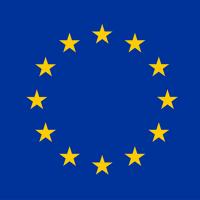We will assemble a programme of speakers who will consider the many ways supercontinuum generation do play an essential role in physics and photonics. Courses will be given in english and will be organized in the framework of the work packages WP1 and WP4 “Fibre modelling and SC applications” of the European ITN project.
Ph.D Students will be trained in the basics of nonlinear fiber optics and in the use of advanced numerical simulation software for the design of photonic crystal fibers and the study of supercontinuum generation in optical fibers. The participants will acquire knowledge in nonlinear optics, numerical methods, emphasizing both the underlying physics and mathematics, and their performance in solving important photonics problems.
The ESRs will face real-world requirements of engineering design criteria to specific applications of their respective projects in that the numerical simulations are to be followed by characterization of experimental supercontinuum sources.
Preliminary Program
Day 1 (Tuesday 19/09) - Basics
8h30-10h00 Registration and Welcome
9h00-10h30 - Dr Mariusz Klimczak (Institute of Electronic Materials Technology, ITME)
Introduction to nonlinear photonic crystal fiber
Abstract: The aim of the lecture is to provide a concise rehearsal of the physical fundamentals of wave optics and of the description of light propagation in optical fibers, followed by a review of the different aspects of photonic crystal fiber properties. Having settled for a description in the domain of physical optics, the lecture follows a track from the basic wave function, through the wave equation, the electromagnetic nature of light and the Maxwell Equations, up to the deriving of the wave equations describing the electric and magnetic fields of a light wave. With this, the propagation in a step-index, cylindrical fiber is discussed with the wave optics approach, and the wave equations describing the guided modes are derived. The basic characteristics of optical fibers are then discussed, including attenuation, dispersion, polarization and nonlinear response, before moving into the photonic crystal fibers (PCF) proper. This part begins with discussion of the photonic band gap effect, to then return to total internal reflection fibers and to discuss the unique dispersion engineering flexibility enabled by the PCF. Engineering of the modal properties of PCFs is pictured with the endlessly single mode fiber. The section is closed with introduction of the anti-resonant fibers, briefly focusing on their guidance mechanism as well as the dependencies between the different geometric parameters and their propagation properties. Then, the different possible technological approaches to the development of physical PCF structures are presented, including the stack-and-draw, extruding and drilling of PCF preforms. The lecture is concluded with putting the PCFs into the perspective of supercontinuum generation, specifically focusing on the role, which the dispersion, aside of the pump pulse duration, plays in determining the dynamics of the associated nonlinear optics processes.
10h30 -11h00 - Coffee Break
11h00-12h30 - Pr. Johann Troles (Institut des Sciences Chimiques de Rennes, CNRS, Université de Rennes 1, France)
Optical properties and fabrication of infrared fibers
12h30-14h00 - Lunch and Discussion
14h00-15h30 - Pr Christophe Finot (ICB, CNRS, Université de Bourgogne, France)
Basics of Nonlinear Photonics
Abstract: We recall the basis of linear and nonlinear propagation in a single mode optical fiber. Starting from the time-frequency representation, we will qualitatively describe the consequences of dispersion and Kerr effects. It will help us to understand how the Kerr nonlinearity can be useful to temporally or spectrally compress a pulse. We will also introduce the soliton and the process of modulation instability that can develop in the regime of anomalous dispersion. The dynamics in normally dispersive fibers are radically different and nonlinear structures such as self-similar waves can be observed. The various concepts will be useful to understand various functionalities used in the field of nonlinear photonics.
Coffee Break
16h00-17h30 - Pr. John M. Dudley (FEMTO-ST institute, CNRS, Université de Franche-Comté, France)
Femtosecond supercontinuum generation: Basics and Numerical modelling
17h30 - 17h50 Amar Nath Ghosh (FEMTO-ST institute, ESR SUPUVIR)
Numerical tools for modelling photonic crystal fibers
Day 2 (Wednesday 20/09) Supercontinuum Properties
9h00-10h30 - Pr. Goery Genty (Tampere University of Technology, TUT)
Coherence of supercontinuum Light
10h30-11h00- Coffee Break
11h00-12h30 - Pr. Morten Bache (Technical University of Danemark, DTU)
Supercontinuum generation in quadratic nonlinear crystals
12h30-14h00 - Lunch and Discussion
14h00-15h30 - Pr. Arnaud Mussot (IRCICA institute, PHLAM, CNRS, Université de Lille, France)
Full experimental characterization of the nonlinear stage of modulation instability in optical fibers
15h30 -16h00- Coffee Break
16h00-17h30 - Pr Stéphane Coen (Department of Physics, The University of Auckland, New Zealand)
Supercontinuum, cavity solitons and Frequency combs
17h30- 17h50 Thomas Ferhat (NKT Photonics, Danemark)
19h30 - School Dinner (city center)
Day 3 (Thursday 21/09) Applications of Supercontinuum light sources
9h00-10h30 - Pr. Katia Gallo (KTH, Royal institute of Technology, Sweden)
On-chip supercontinuum generation
11h00-12h30 - Dr. Bettina Heise (Research Center for Non Destructive Testing GmbH, Austria)
Optical Coherence Tomography (OCT) for applications
12h30-14h00 - Lunch and Lab tour
14h-15h30 - Pr Philippe Leproux (Institut Xlim, CNRS, Université de Limoges, France)
Applications of Supercontinuum light sources 2
16h00-17h30 - SUPUVIR meeting and ESR flash talks
17h30 - Farewell Address

